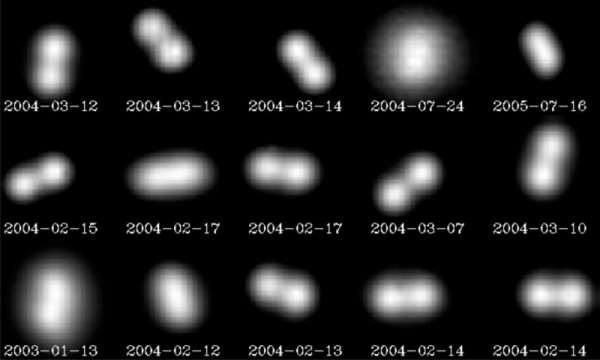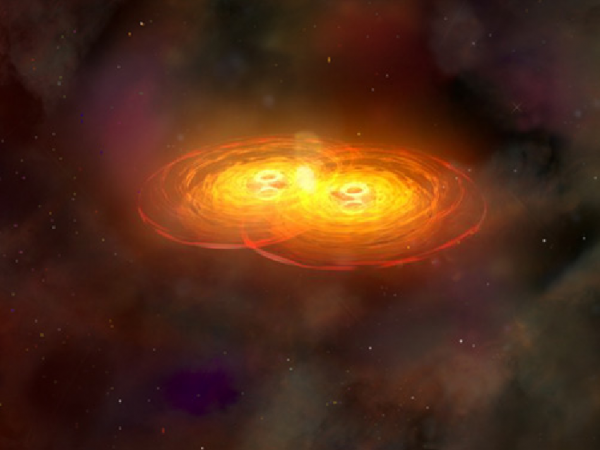“Art has a double face, of expression and illusion, just like science has a double face: the reality of error and the phantom of truth.” -Publilius Syrus
Out in the depths of space, objects range from the incredibly small and low mass to the huge and super-heavy, shrinking down again for the most ultra-massive objects in the Universe.
 Image credit: The Antiope Doublet asteroid / ESO, via http://www.eso.org/public/images/eso0718b/.
Image credit: The Antiope Doublet asteroid / ESO, via http://www.eso.org/public/images/eso0718b/.
But what would happen, on all scales, if you took two such identical objects and merged them together?
Find out what happens when the largest objects meet their twins!
- Log in to post comments


I've read a few other things about neutron star mergers and how they produce very heavy elements, eg. gold. As I understand it, a neutron star is basically made up of, well, neutrons that are stabilized by the intense gravity and surrounded by a thin shell of iron. So with very few protons around how does the formation of gold, etc happen?
My simple-minded assumption is that the merged neutron stars would *just* collapse into a black hole. In contrast to that, do they destroy each other, leading to collections of neutrons that are no longer stabilized by gravity and undergo a series of decays leading to a stable nucleus made up of neutrons and protons?
Publius Syrus likely didn't say that quote at the top, for two reasons: 1. I cannot seem to find the original Latin for the quote, at least it's not in his Maxims. 2. They didn't have "science" per se at the time, so he would have either said philosophy, or the root word for Science, which is "scientia" and means knowledge. So, bad translation at the least, likely misattribution at the worst.
I think the thing to remember about neutron stars is that they have relatively few protons around compared to their mass, but the objective number available might be very large. Consider that there is likely a constant infall of hydrogen from space. That hydrogen is going to get converted to neutrons under the pressures the star produces, but since pressure increases with depth, the process at the surface may not be instantaneous and there may be some equlibrium condition (think of the star as a bucket with a hole in it; it's possible for the star's environment to pour hydrogen "water" in at a rate that allows the water level in the bucket to remain constant or nonzero, even as that water is "flowing out the hole" via proton-to-neutron conversion).
This is why I have argued on other threads (more for amusement value than anythnig else) that the heaviest element in existence isn't 118; it's a big neutron star. :)
eric and jt,
It would also seem to me (and I'm not a particle physicist so this may be wrong) that it would be relatively easy in particle interactions to convert neutrons into protons. A neutron, IIRC, has slightly more mass than a proton. Further, the conversion of a neutron to a proton is really just the conversion of one up quark to a down quark, which is an allowed transition. Would neutrons not just be converted into protons in such interactions?
@Sean T #4: That's just beta decay. A free neutron has a lifetime of about 800 seconds. It decays to an electron, an electron-type antineutrino, and a proton.
However, in a bound system (like a nucleus, or a neutron star), this lifetime no longer applies. It is the overall energetics of the whole bound system which determines whether one of the neutrons (and we can't tell which one) is allowed to decay. In some nuclei, it's energetically favorable for a proton to turn into a neutron, emitting a positron and neutrino (this is called "inverse beta decay").
For what happens in nucleosynthesis during a supernova or WD merger, look up "r-process" and "s-process".
Hi Ethan,
How to reach you? Can you please send me you mail id?
Thanks,
Apurva
The Big Bang Theory/Standard Cosmological Model rests on at least one foundational assumption:
homogeneity (i.e. no lumpiness in the universe).
These are some amazing lumps!